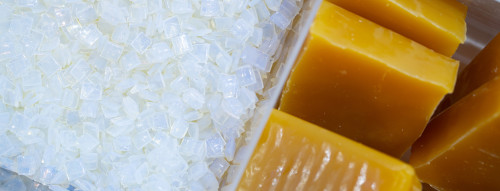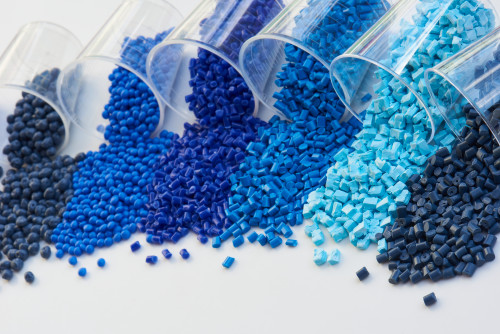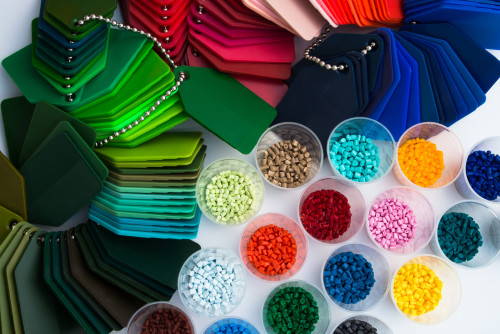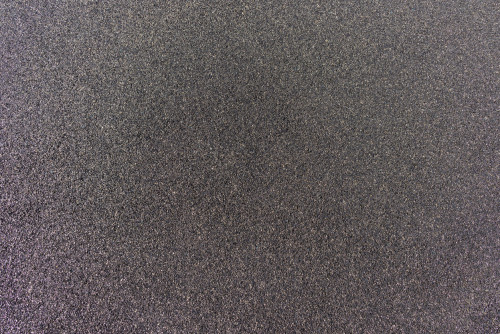Plastics compounding is a process of melt blending polymers together with other additives. This process changes, and normally enhances the physical, thermal, electrical or aesthetic characteristics of the polymer. The final product is called a compound.
Additives can include pigments, fillers (eg Glass fibres or minerals), additives eg UV protection and flame retardants. The increasing demand for materials with more economical and environmental aspects have changed the way we think about the plastics we offer. Resinex offers a wide range of engineering compounds.
Related Products
Market Segments
Adhesives
We have a range of materials in our portfolio that are used in the manufacturing of adhesives. From EVA to plastomers and olefins to waxes. These products are compounded to produce a range of applications. They can provide low odour properties giving excellent thermal stability and tear strength for many applications.
Applications
- Flexible food packaging
- Hot melt adhesives and seal


Adhesives
We have a range of materials in our portfolio that are used in the manufacturing of adhesives. From EVA to plastomers and olefins to waxes. These products are compounded to produce a range of applications. They can provide low odour properties giving excellent thermal stability and tear strength for many applications.
Applications
- Flexible food packaging
- Hot melt adhesives and seal

General
Material solutions can be provided by compounding additives to the polymer base. This can enhance the properties or deliver characteristics that are required for the application. Resinex offer a variety of engineering compounds from prime, industrial and also recycled options - Post Industrial (PIR) and Post Consumer (PCR) depending on the specification required.
Applications
- Flame retardant characteristics
- Slip and wear properties
- Building applications
- Household appliances
- Automotive applications

General
Material solutions can be provided by compounding additives to the polymer base. This can enhance the properties or deliver characteristics that are required for the application. Resinex offer a variety of engineering compounds from prime, industrial and also recycled options - Post Industrial (PIR) and Post Consumer (PCR) depending on the specification required.
Applications
- Flame retardant characteristics
- Slip and wear properties
- Building applications
- Household appliances
- Automotive applications
Masterbatch
One of the ways to modify an existing material either with colour or an additive to enhance the properties, is via a masterbatch. This is a cost effective way to colour the part, particularly where several different colours are needed. Other options are to modify a property of the existing material, for example to improve wear or adding flame retardant to make the part ignition resistant.
Applications
- Colour masterbatches
- Property modifiers
- Additive carriers


Masterbatch
One of the ways to modify an existing material either with colour or an additive to enhance the properties, is via a masterbatch. This is a cost effective way to colour the part, particularly where several different colours are needed. Other options are to modify a property of the existing material, for example to improve wear or adding flame retardant to make the part ignition resistant.
Applications
- Colour masterbatches
- Property modifiers
- Additive carriers
Rubber Compounds
By adding rubber into a base material such as nylon, we can enhance the impact properties. When making seals and gaskets, we can use a PP or PS which is cross linked with EPDM rubber. This has a varying compression set depending on the rubber content. Rubber compounds are used where we need enhanceds impact properties and flexibility.
Applications
- Automotive tyres
- Fuel hoses
- Compound modification
- Insulation for pipes
- Seals and diaphragms


Rubber Compounds
By adding rubber into a base material such as nylon, we can enhance the impact properties. When making seals and gaskets, we can use a PP or PS which is cross linked with EPDM rubber. This has a varying compression set depending on the rubber content. Rubber compounds are used where we need enhanceds impact properties and flexibility.
Applications
- Automotive tyres
- Fuel hoses
- Compound modification
- Insulation for pipes
- Seals and diaphragms














